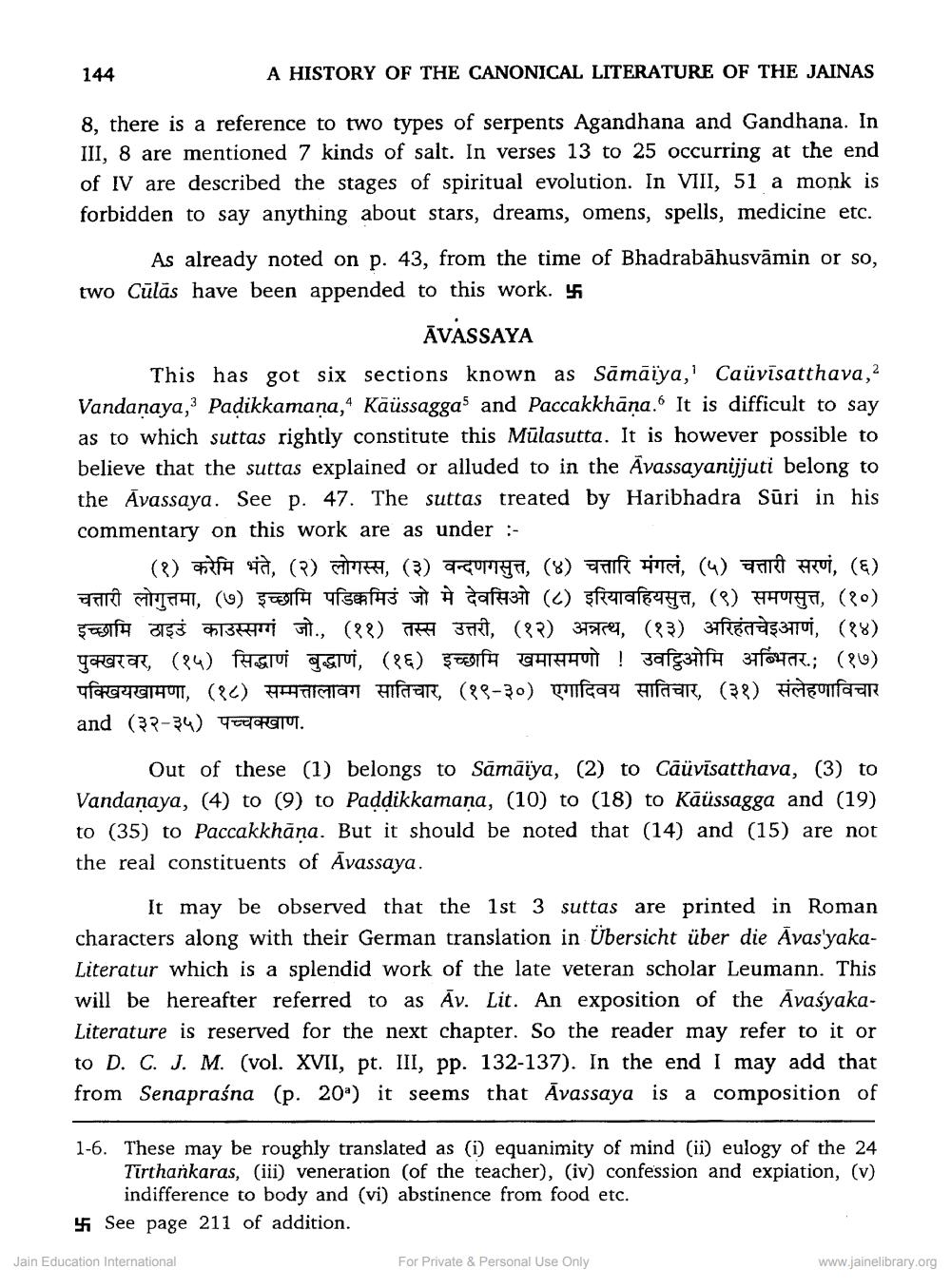________________
144
A HISTORY OF THE CANONICAL LITERATURE OF THE JAINAS
8, there is a reference to two types of serpents Agandhana and Gandhana. In III, 8 are mentioned 7 kinds of salt. In verses 13 to 25 occurring at the end of IV are described the stages of spiritual evolution. In VIII, 51 forbidden to say anything about stars, dreams, omens, spells, medicine etc.
As already noted on p. 43, from the time of Bhadrabāhusvāmin or so, two Cūlās have been appended to this work.
ĀVASSAYA This has got six sections known as Sāmāïya,' Caüvisatthava,2 Vandanaya, Padikkamana, Kāüssaggas and Paccakkhāna. It is difficult to say as to which suttas rightly constitute this Mülasutta. It is however possible to believe that the suttas explained or alluded to in the Avassayanijjuti belong to the Avassaya. See p. 47. The suttas treated by Haribhadra Sūri in his commentary on this work are as under :
(2) Heid, () MTKY, (3) curTYT, (8) af tici, (u) a Hui, () चत्तारी लोगुत्तमा, (७) इच्छामि पडिक्कमिउं जो मे देवसिओ (८) इरियावहियसुत्त, (९) समणसुत्त, (१०) Fault 353 344 4., (28) T 3T), (?) 347174, (83) 3TRETT310, (88) yrarea, (84) FASIui quali, (€) STESH G4C441 ! gafçuift Bufortal.; () पक्खियखामणा, (१८) सम्मत्तालावग सातिचार, (१९-३०) एगादिवय सातिचार, (३१) संलेहणाविचार and (32-34) 421461.
Out of these (1) belongs to Sāmāïya, (2) to Cāüvīsatthava, (3) to Vandanaya, (4) to (9) to Paddikkamaņa, (10) to (18) to Kāüssagga and (19) to (35) to Paccakkhāņa. But it should be noted that (14) and (15) are not the real constituents of Avassaya.
It may be observed that the 1st 3 suttas are printed in Roman characters along with their German translation in Übersicht über die Avas'yakaLiteratur which is a splendid work of the late veteran scholar Leumann. This will be hereafter referred to as Āv. Lit. An exposition of the AvasyakaLiterature is reserved for the next chapter. So the reader may refer to it or to D. C. J. M. (vol. XVII, Pt. III, pp. 132-137). In the end I may add that from Senapraśna (p. 20) it seems that Avassaya is a composition of
1-6. These may be roughly translated as (1) equanimity of mind (ii) eulogy of the 24
Tirthankaras, (iii) veneration (of the teacher), (iv) confession and expiation, (v)
indifference to body and (vi) abstinence from food etc. 41 See page 211 of addition.
Jain Education International
For Private & Personal Use Only
www.jainelibrary.org




